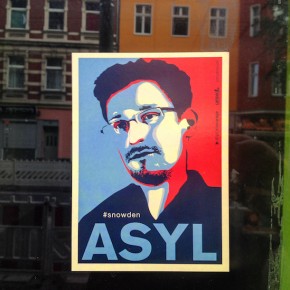Few pieces of journalism have aroused the ire than Hannah Arendt’s Eichmann in Jerusalem did when it was published in 1963. Arendt, who covered the trial for The New Yorker, seemed to have her own agenda. At times her tone bordered on flippancy, particularly when she accused the Judenräte, the councils that ran the ghettoes of Poland and Russia, of collaboration. But her most enduring, and enduringly controversial assessment, was that of the trial’s subject, the former SS Oberstandartenführer Adolf Eichmann.
Eichmann’s trial occurred at a crucial moment in the post-history of the Holocaust in Europe. Although the victorious Allies had tried and hanged a number of the most prominent Nazi criminals at the end of the war, a combination of the outbreak of the Cold War and the desire of many Germans to focus on absolutely any other topic besides the crimes of the Hitler regime meant that a decade passed without a great deal being done to bring those responsible for the Nazi genocide to justice. It was not until the late 1950s when the project was taken up again in earnest, due in no small part to the efforts of crusading jurists like Fritz Bauer, whose efforts would bear fruit in the Frankfurt Auschwitz Trials held from 1963 to 1965.
The state of Israel, too, was in transition. In the years following the Holocaust, many striving to build the Israeli state sought to deemphasize that element of recent history, seeing in it a narrative of Jewish weakness incommensurate with the stronghold that they were creating in Palestine. The seizure of Eichmann, the most wanted of the still unaccounted for war criminals, in Argentina and his subsequent trial in Jerusalem represented a process of working through the trauma of the Shoah and of integrating it into the ideological and historical foundations of the Jewish state, one in which the narrative of Jewish vulnerability was to be converted into one of strength and self-assertion through the pursuit and punishment of the Jews’ erstwhile tormentors.
Arendt’s account of the trial drew criticism in Israel, and elsewhere, for a number of reasons. She failed, in the eyes of many, to recognize the choiceless choices with which the member of the Judenräte had been faced, and although there were some nefarious figures associated with these councils, such as the odious Chaim Rumkowski, there were others who did their best to present whatever resistance was possible to the Nazis. Her assessment of Eichmann, summed up in the subtitle of her book, focused less on (and seemed to a degree to deemphasize) his personal monstrosity. He did not, she claimed, “enter the [Nazi] Party out of conviction, nor was he ever convinced by it…” He was a bureaucrat, the decisive flaw in whose character was “his almost total inability to look at anything from the other fellow’s point of view.”
Arendt showed herself, both in The Origins of Totalitarianism (written a decade earlier) and in Eichmann in Jerusalem to be a sort of functionalist avant la lettre. She preferred to explain the broad trends of human history in terms of structures rather than personas, and it was not obviously wrong for her to do so. Yet in the case of Eichmann, this approach to the broader questions of human historical development led her to commit some serious analytical errors.
Stangneth’s book clarifies many of these. Eichmann was, in actuality, a convinced Nazi, a fact that should have been evident to Arendt since absolutely nobody ended up in the SS by accident. Once ensconced there, Eichmann engaged in a campaign of self-aggrandizement, constructing himself as an expert on Jewish affairs (and mastering a few phrases of Hebrew to complete the illusion). He was, as Stangneth shows, a convinced Jew-hater, remaining convinced to the end of his days of the truth of Nazi claptrap about the ineluctability of conflict and war between races.

A further virtue of Stangneth’s book is the light that it shines on the set of former SS men, Nazi party functionaries, and fellow travelers in which Eichmann participated in Buenos Aires in the 1950s. Stangneth has dramatically increased our knowledge of the so-called Sassen circle, the National Socialist salon and discussion forum run by the former Dutch Freiwillige SS trooper and journalist Willem Sassen. This cell of graying men vainly striving for a return to the political power and influence that they had enjoyed in the 1940s, might merit the term pathetic, if it were possible for a thinking person to muster anything resembling pathos for a group whose members ran the gamut from mere racists to perpetrators of genocide. Their discussions evinced that peculiar politics typical of Holocaust revisionists down to the present time, characterized by the view that the Holocaust never happened, but that it would have been a good thing if it had.
For people with an interest in redeeming what Heidegger so nauseously designated as “the inner truth and greatness” of National Socialism, the cold butchery of 6 million Jews (and very likely 4 million others) ranging from babes in arms to men and women in the dotage presented a serious challenge. A number of argumentative strategies were employed to this end. It was argued by people in and around the Sassen circles (and more recently by the likes of David Irving) that Hitler himself did not know about the killings and sought to halt them when he discovered what was going on in 1943. In this line of “reasoning”, it was elements within the SS (sometimes solely the Gestapo, sometimes a broader cross section) that undertook the distinctly un-German project of genocide. More extreme versions of this thesis saw the whole affair as evidence of Jewish infiltration of the National Socialist movement in general, and of the SS in particular, with the goal of building international support for the formation of a Jewish state through the perpetration of massacres which could be pinned in the unsuspecting (and notionally blameless) Nazis. At the furthest extreme, it was mooted that Eichmann himself was a Jew and that he had masterminded the plot himself.

That this view, startling in its complete insanity, was seriously mooted by people in the circle around Sassen provides a telling illustration of the desperation and impotence of their collective mindset. But there was also, according to Stangneth, a less lunatic approach which sought to debunk the so-called “myth” of the 6 million. It was this with which the more lucid thinkers in the circle thought that Eichmann could help them. From his position as the leading figure in Referat IV B 4 of the Reichssicherheitshauptamt (RSHA), the subsection of the Gestapo tasked with handling the Jews as a group, Eichmann would have been ideally placed to provide the information that the minimizers sought. This was uniquely so, in fact, given that so many of the other players were out of the frame. Himmler was dead, as were Reinhard Heydrich, and Ernst Kaltenbrunner. Heinrich “Gestapo” Müller, Eichmann’s former boss in Amt IV of the RSHA, hadn’t been seen since the end of the war, and was presumed dead as well (although rumors of his survival persisted for many years.) So there was only Eichmann, and much of the meat of Stangneth’s narrative is devoted to the series of interviews conducted by Sassen in the context of a book project intended for publication by the far right Dürer Verlag.
Over the course of several weeks, Eichmann, Sassen, and a number of others (including Himmler’s former adjutant Ludolf von Alvensleben) poured over the available data, both in Eichmann’s memory, and in the nascent postwar literature on the Holocaust, trying to come up with an accurate figure for the total victims. To the horror of Sassen and the others seeking to minimize (or eliminate) Nazi culpability for one of the greatest instances of mass killing in the history of the West, it turned out that even conservative assessment of affairs led to totals roughly commensurate with those mooted in works like Gerald Reitlinger’s path-breaking The Final Solution (1953). Worse yet, it became increasingly clear that Eichmann himself was less interesting in tamping down the numbers and more interested in providing some sort of justification for the genocidal enterprise which he had so ably and assiduously run.
Eichmann’s interactions with the Sassen circle, which ended when it became clear to his collaborators that he was part of the problem rather than of the solution, did provide him with a valuable opportunity to practice his self-presentation. Although it did not cut much ice in terms of the final outcome of his trial, Eichmann’s practiced self-presentation was seductive, and not only to Hannah Arendt. “Even in Israel,” Stangneth writes, “surrounded by people who knew exactly who he was, Eichmann managed to do what he had done so many times before as a Nazi functionary: arouse the sympathy of his opponents.” And Arendt was not the only one who proved susceptible to Eichmann’s charms. “Even Avner W. Less occasionally struggled with Eichmann’s surprisingly winning ways, despite being an experienced interrogator and possessing the tools to deal with charm offensives.” Given that Arendt had considerably less access to incriminating materials and face time than Less, it is hardly surprising that she should have been all the more vulnerable to Eichmann’s illusionary persona.
A number of reviewers have taken the opportunity of the publication of an English translation of Stangneth’s book to heap scorn on Hannah Arendt. Richard Wolin went so far as to accuse Arendt of moderating her treatment of Eichmann in deference to Martin Heidegger, her former teacher. Stangneth’s treatment of Arendt’s account is more balanced. Her book illustrates the degree to which the persona presented by Eichmann at his trial was practiced and perfected in the course of his talks with the Sassen circle. Arendt was, in fact, not totally unaware of this circle and its activities, but lacked the extensive access to tapes and transcripts that allowed Stangneth to develop a more thorough and nuanced account.
Ultimately, as Christopher Browning pointed out to a writer for the New York Times, Arendt was right for the wrong reason. Germany was not, pace Daniel Jonah Goldhagen, a nation of rabid, eliminationist anti-Semites. Zealots there were, and Eichmann was certainly one of them, but the scholarly literature on bureaucracy and totalitarianism provides excellent grounds to claim that organized structures of authority can do a great deal to elicit radical behavior (or behaviors that facilitate radical consequences) even without a high degree of generalized ideological commitment. Stangneth herself has rather more sympathy for the substance of Arendt’s errors, resisting the temptation to overplay her hand. Arendt’s assessment of Eichmann’s evil as banal does not rest on his being a faceless bureaucrat, but rather that his did not come complete with horns and a tail. And in this respect her judgment on Eichmann as a representative of a peculiarly modern evil rings true. There is a widespread cultural belief that evil takes the form of mad scientists and Bond villains. The truth, of which Eichmann is an exemplar, is much more prosaic and, in that respect, much more dangerous.
Photographs courtesy of Joel Schalit.





